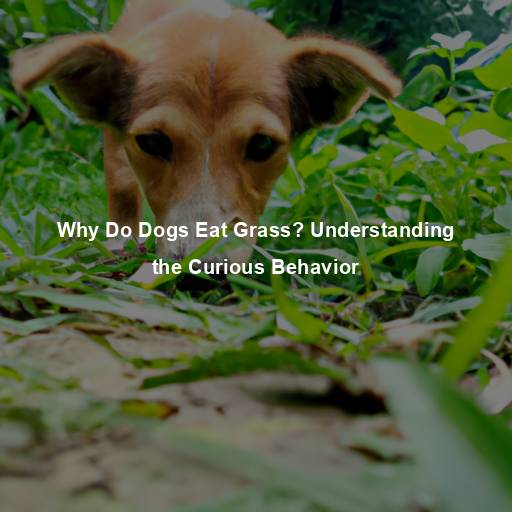Dogs: Unraveling the Mystery of Howling Canines
Last Updated on October 30, 2023 by Evan
Contents [hide]
- 1 Understanding the Canine Howl: Decoding the Language of Dogs
- 1.1 The Origins of Howling: A Primitive Call from the Past
- 1.2 The Many Faces of Howling: Expressions of Emotion
- 1.3 The Language of Howls: Interpreting the Canine Melody
- 1.4 When to Be Concerned: Understanding Excessive Howling
- 1.5 The Human-Canine Connection: Responding to the Howling Call
- 1.6 Unleashing the Mystery: Why Dogs Howl at the Moon?
- 1.7 The Howling Symphony: Breeds Known for Their Vocal Talents
- 1.8 Canine Choir: Howling in Multi-Dog Households
- 1.9 Howling: Nature’s Alarm System
- 1.10 The Moonlit Serenade: Howling and the Nighttime Connection
- 1.11 The Howling Enigma: Unanswered Questions
- 2 FAQs – Why the Dogs are Howling
Understanding the Canine Howl: Decoding the Language of Dogs
Dogs have been our faithful companions for thousands of years, captivating us with their loyalty, unconditional love, and unique behaviors. One of the most intriguing and evocative sounds they produce is the howl. A dog’s howl can be hauntingly beautiful, yet it also stirs up curiosity and questions in our minds. Why do dogs howl?
The Origins of Howling: A Primitive Call from the Past
Exploring the enigmatic nature of canine communication, one cannot help but wonder why dogs unleash their haunting howls into the night. Delving into their ancestral lineage, we find a fascinating connection to the wolves, their wild predecessors. These sociable creatures, both wolves and dogs, thrive on the intricate web of interconnectedness within their packs. Howling emerges as a mysterious medium through which vital messages are conveyed across vast expanses, acting as a melodic beacon guiding pack members towards each other, delineating territorial borders, and warding off unseen dangers.
Throughout history, canines have undergone a fascinating transformation from wolves to our faithful companions. Despite this domestication, dogs continue to possess a deep-seated instinct to express themselves through the haunting melodies of howling. This ancestral link serves as a poignant reminder of their wild past, showcasing the enduring spirit that resides within our beloved furry friends. So, the next time you hear your pup’s melancholic howl pierce through the night, take a moment to marvel at the captivating connection they have with their untamed ancestry.
The Many Faces of Howling: Expressions of Emotion
From ancient roots to modern emotions, dogs have developed a captivating howling repertoire that embodies an array of feelings. Whether it’s a primal instinct bursting forth or an appeal for human interaction, these canine vocalizations have perplexed and fascinated us for centuries. To delve deeper into this enigmatic behavior, let’s unravel the common triggers that set off the melodic symphony of canine howling.
The emotional needs of our furry friends should never be overlooked. As social beings, dogs thrive on companionship, and prolonged periods of solitude can leave them feeling isolated and overwhelmed with separation anxiety. When left alone, their natural instinct kicks in, leading them to howl as a means of expressing their emotions and yearning for solace.
Have you ever stopped to wonder why your furry companion suddenly transforms into a howling maestro whenever the wailing of an ambulance siren fills the air? It turns out that dogs possess an uncanny ability to detect high-pitched sounds that activate their primal instinct to harmonize with the sirens. This perplexing behavior stems from their remarkable auditory prowess, as their finely tuned ears catch every nuanced frequency, leading to an irresistible urge to join in the melodic commotion. So, the next time you find yourself in the midst of a symphony of howls, remember that it’s just your dog expressing their unique response to the perplexing allure of high-pitched sounds.
In the intricate dynamics of multi-dog households, the primal act of howling finds purpose beyond mere acoustics. Serving as an intricate language, it provides a means of communication that transcends the boundaries of words. With each resonating note, the pack’s social fabric is woven tighter, fortified by the invisible threads of shared understanding, deepening their sense of belonging in a world where communication takes on a melodic form.
Have you ever wondered why your furry companion sometimes unleashes a haunting howl that tugs at your heartstrings? Well, listen up, because it turns out that your beloved pooch might actually be trying to convey something important. When dogs let out a mournful howl, it could be their perplexing way of expressing their discomfort or even pain, as if they were summoning their human allies to come to their rescue. So next time you hear that soul-stirring melody, pay attention and lend a helping hand to your loyal companion in need.
It’s no secret that our beloved dogs are smart beings, capable of using their vocal prowess to get what they want. From longing for playtime to hunger pangs or a simple yearning to explore the great outdoors, howling becomes their go-to tactic for capturing our undivided attention. With an understanding so astute, their choice to unleash their melodious cries can only be described as a cunning and calculated move by our four-legged companions.
The Language of Howls: Interpreting the Canine Melody
Just like we express ourselves with words and gestures, our furry friends have their own way of communicating. Dogs have a diverse range of vocalizations, from barks to growls, whines, and, of course, those soulful howls. Each howl holds a mysterious tale, and if we lend our ears, we may unlock the secrets hidden within their melodious language. Here, we uncover the enigmatic world of canine howls and explore the potential meanings they convey.
-
The Lonesome Howl: A long, drawn-out howl that echoes through the night. This mournful sound often signifies separation anxiety or a longing to be reunited with their human or canine companions.
-
The Joining Howl: When one dog starts howling, others may join in, creating a symphony of sound. This type of howl is a social invitation, an invitation to join the chorus and strengthen the bond within the pack.
Experience the piercing brilliance of the Alert Howl. This high-pitched, sharp sound cuts through the air, serving as an urgent alarm for the pack. A symbol of vigilance and protective instincts, it rallies the members, warning them of possible threats and intruders daring to approach their sacred domain. When the Alert Howl echoes through the wilderness, the atmosphere is filled with both trepidation and readiness, as the pack unites in its perplexing language of survival.
-
The Contented Howl: A soft, gentle howl that expresses satisfaction and happiness. Dogs may emit this type of howl during moments of pure joy, such as when their favorite human returns home after a long absence.
-
The Vocalization Howl: Dogs may also howl as a response to their human’s vocalization, mimicking the sound or trying to join in the conversation. It’s their way of participating and engaging with their human pack members.
When to Be Concerned: Understanding Excessive Howling
Dogs are known for their vocal expressions, but when howling becomes more of a constant symphony, it’s time to decode the underlying message. Not all howls are created equal, and it’s crucial to decipher between the typical canine serenade and the signs that beg for some troubleshooting. Here, we unveil a few telltale signs that demand your attention and call for immediate action.
Is your furry companion feeling a sense of abandonment? Do they wholeheartedly express their emotions through howls that echo through the empty hallways? It’s possible that your dog is grappling with separation anxiety, yearning for your presence during those lonely moments. Seeking guidance from a skilled dog trainer or behaviorist can pave the way for effective solutions, providing comfort to your beloved pet.
-
Health Problems: Dogs in pain or discomfort may resort to excessive howling as a cry for help. If your dog’s howling is accompanied by other signs of illness, such as lethargy, loss of appetite, or changes in behavior, consult a veterinarian to rule out any underlying medical conditions.
-
Environmental Factors: Dogs living in noisy environments or close to high-traffic areas may be more prone to excessive howling. Consider providing a calm and quiet space for your dog to minimize external stimuli that trigger excessive vocalization.
Is your canine companion unleashing a symphony of howls that are leaving you feeling puzzled and perplexed? Well, fear not, dear readers, for we have unraveled the enigma behind your dog’s melodious outbursts. Turns out, our furry friends, with their bountiful intelligence, crave mental and physical stimulation. So, if you find your pup’s howling intermingled with bouts of boredom or restlessness, it’s time to unleash a torrent of exercise, engaging playtime, and mind-boggling mental enrichment activities that will leave them howling with delight instead.
The Human-Canine Connection: Responding to the Howling Call
Understanding and addressing our furry friends’ howling behavior is paramount in our quest to be conscientious dog guardians. Embarking on this journey, we must equip ourselves with crucial tips that pave the way for a harmonious bond between humans and canines. With fervor and determination, let us uncover the secrets to cultivating a relationship that is both nurturing and gratifying.
- Listen and Observe: Pay attention to the different types of howls your dog produces and the situations that trigger them. By understanding the context and nuances of their howling, you can better address their needs.
Providing a sense of comfort and reassurance to our furry friends is essential when they find themselves howling due to separation anxiety or feelings of loneliness. It’s important to establish a consistent routine that incorporates quality time, engaging in interactive play, and implementing positive reinforcement training techniques. These practices not only strengthen the bond between you and your canine companion but also help alleviate their distress and promote a sense of overall well-being.
- Seek Professional Help: If your dog’s howling becomes excessive, disruptive, or is accompanied by concerning behavior, consult with a professional dog trainer, behaviorist, or veterinarian. They can provide guidance and develop a tailored plan to address the underlying issues.
Creating a calming atmosphere for your furry companion is essential in promoting their emotional well-being. Make sure to establish a serene and secure space where your dog can seek solace when they are burdened by feelings of unease or stress. Equipped with cozy bedding, engaging toys, and gentle background sounds, this haven will work wonders in easing their worries and alleviating anxiety.
Keep your furry friend on their toes by incorporating a range of enriching activities into their daily routine. From challenging puzzle toys and interactive play sessions to regular obedience training and stimulating daily walks, these activities will not only keep their minds sharp, but also ensure their bodies stay active and healthy. By providing them with both mental and physical stimulation, you’ll witness your dog thrive in ways that will leave you pleasantly perplexed.
Unleashing the Mystery: Why Dogs Howl at the Moon?
Throughout history, the allure of dogs howling at the moon has captured our fascination, weaving a tapestry of legends and mystery. While this notion conjures images of harmonious serenades under a luminous sky, the truth is far more complex. Dogs’ howling is not a direct ode to the moon itself, but rather a symphony of responses to various stimuli that beckon their attention. The moon, with its radiant glow, merely sets the stage for their vocal expressions, as they navigate the enigmatic realm of their instincts and surroundings.
The Howling Symphony: Breeds Known for Their Vocal Talents
While all dogs have the ability to howl, some breeds are more notorious for their vocal talents than others. Let’s take a closer look at a few breeds that have earned a reputation for their howling prowess:
Siberian Husky
Siberian Huskies are known for their striking appearance and their distinctive howl. Bred to be sled dogs, they have a strong instinct to communicate over long distances. Their howls are melodic, almost resembling a wolf’s howl, and are a way for them to express their emotions and communicate with their pack members.
Alaskan Malamute
Similar to the Siberian Husky, the Alaskan Malamute is a northern breed with a rich history of working alongside humans. Their howls are deep and resonant, often accompanied by a full-body wiggle. Malamutes use their howls to communicate with their human companions and other dogs, expressing their excitement or alerting others to potential dangers.
Beagle
With their exceptional olfactory abilities and an unmistakable vocalization that blends howling and barking, Beagles have established themselves as champions of scent detection. Whenever these four-legged detectives catch a whiff of something intriguing or embark on an adrenaline-pumping pursuit, they unleash their distinct bay, serving as a beacon for their human counterparts to either regroup or partake in the thrilling adventure.
Bloodhound
Bloodhounds possess an extraordinary sense of smell, which they use for tracking scents over long distances. Their deep, mournful howls are a way to communicate their location and signal to their human handlers that they have found a scent trail. Bloodhounds’ howls are often accompanied by their signature droopy ears and soulful expressions.
Canine Choir: Howling in Multi-Dog Households
Have you ever found yourself in the midst of a pack of dogs, when suddenly, one lets out a primal howl that sets off a symphony of haunting cries? It’s a perplexing yet fascinating phenomenon to witness. Rest assured, this is not some random act of madness, but rather a display of the innate desire of these social creatures to connect and communicate with one another. The power of canine howling in multi-dog households is a testament to their interconnectedness and the depths of their primal instincts.
When one dog starts howling, it acts as a signal to the others that something is happening or that they should join in the vocalization. This behavior strengthens the social bonds between the dogs and reinforces their pack mentality. So, if you have multiple dogs at home and one starts howling, don’t be surprised when the others chime in with their own melodious contributions.
Howling: Nature’s Alarm System
Dogs possess an extraordinary auditory prowess that surpasses our own, enabling them to detect obscure sounds that elude our perception. This exceptional auditory acuity renders them exceptional guardians in select circumstances. Dogs may unleash their melodic howls upon encountering distinct sounds, ranging from the distinct wail of a siren to the harmonious notes produced by musical instruments, or even the captivating melody of your cherished television show’s theme song. Such is the intriguing nature of their audible sensitivity, always keeping us on our toes, immersed in an ambience of perplexity and awe.
Dogs possess an innate tendency to unleash their vocal prowess, producing those ear-piercing and occasionally startling sounds that can resonate with our senses. It’s a fascinating canine behavior, a primal response aimed at rousing our attention to the prospect of something extraordinary or possibly menacing. Whether it’s a fire truck whizzing past or a familiar tune playing, our furry companions fulfill their duty as nature’s alarm system. Embrace the perplexity of their howls and acknowledge their role as our faithful sentinels, ever watchful and ever ready to signal the unexpected.
The Moonlit Serenade: Howling and the Nighttime Connection
Have you ever noticed that dogs tend to howl more frequently during the night? This nocturnal behavior has its roots in their evolutionary history. In the wild, wolves and their domesticated descendants, dogs, are more active during the twilight hours. Howling under the moonlit sky allows them to communicate across greater distances when visibility is limited.
The stillness of the night provides the perfect ambiance for their voices to carry, ensuring that their messages reach far and wide. So, if you find yourself listening to the haunting melody of your dog’s howl in the dark of night, remember that it’s their way of connecting with their primal instincts and embracing their role as creatures of the night.
The Howling Enigma: Unanswered Questions
Delving into the enigmatic world of a dog’s howling instinct, we find ourselves captivated by the ever-present riddles that persist effortlessly. Despite our ceaseless quest for knowledge, certain facets of this behavior elude our understanding, weaving a tapestry of perplexity for both scholars and devoted dog lovers. Join us as we venture into the realm of unanswered questions, where curiosity reigns supreme and the enigma enthralls all those who seek to unravel its profound mysteries.
Why Do Some Dogs Howl More Than Others?
Dogs, those fascinating creatures known for their diverse vocal capabilities, possess an intriguing variance in their howling tendencies. While every dog possesses the innate ability to release a soul-stirring howl, certain charismatic canines appear to be more inclined towards vocalization than their counterparts. The captivating interplay of genetics, breed specifics, unique temperaments, and the enigmatic environmental influences remains an enigma, warranting further exploration and profound comprehension. Only by delving deeper into this melodic mystery can we unravel the hidden factors that contribute to this awe-inspiring symphony of sound.
Can Dogs Understand Each Other’s Howls?
Dogs, those fascinating creatures of boundless curiosity, have long captivated our imagination with their uncanny knack for deciphering human language. But what if we turned the tables and delved into the enigmatic world of their own communication – the hauntingly beautiful howls that echo through the night? Surely, they must possess some innate understanding of each other’s melodic cries, a secret language woven into the tapestry of their existence. Although dogs do exhibit an extraordinary ability to discern and react to various types of howls, unraveling the full extent of their comprehension of their fellow canines’ vocalizations remains a tantalizing puzzle yearning to be solved.
Can Humans Learn to Howl?
It’s fascinating how humans attempt to mimic the enchanting melody of a dog’s howl, despite the improbability of replicating its essence. A select few have dedicated themselves to this intriguing pursuit and have managed to capture fragments of the distinct sound. Though their efforts yield impressive imitations, it is crucial to acknowledge that these imitations are a mere shadow of the authentic canine howl, a unique symphony that remains exclusive to our furry counterparts.
FAQs – Why the Dogs are Howling
Why do dogs howl?
Dogs howl for various reasons. Most commonly, they howl to communicate with their pack or as a response to certain stimuli. Howling can indicate their territoriality, expressing loneliness or separation anxiety, signaling distress or pain, seeking attention, or even responding to certain sounds like sirens, other dogs howling, or musical instruments. Additionally, some breeds are simply more prone to howling than others due to their genetic predisposition.
Can dogs howl to show their emotions?
Certainly! Dogs have their own unique way of expressing their emotions, and one of them is through howling. Howling is a form of communication for dogs, just like barking or whimpering. It is often associated with feelings of loneliness, anxiety, or a desire for social interaction. Dogs may also howl when they are in pain, feeling fearful, or even experiencing intense happiness. To fully grasp a dog’s emotional state, it is crucial to consider the overall context and their body language in conjunction with their howling behavior.
Are all howling sounds the same?
It’s fascinating to think about the incredible diversity and complexity of howling sounds that dogs can produce. There is no one-size-fits-all when it comes to howls. Each dog, with its unique blend of size, breed, and individual quirks, brings a distinctive pitch, duration, and intensity to their vocalizations. It’s simply mesmerizing to witness the depth of emotions and intentions behind each howl – from the deep, mournful tones to the higher-pitched and melodious variations. Dogs truly have a captivating language of their own.
Do all dogs howl?
While all dogs are capable of howling, not all dogs will do so regularly. Howling is a trait that can vary among individual dogs and breeds. Certain breeds, such as Huskies, Alaskan Malamutes, and Beagles, are more known for their howling tendencies due to their nature and ancestry. On the other hand, some dogs may rarely or never howl throughout their lives. It is important to understand that the frequency of howling can be influenced by various factors, including their environment, socialization, and overall temperament.
Can I stop my dog from howling?
Yes, it is possible to manage or reduce your dog’s howling, depending on the underlying reason for it. If your dog is primarily howling due to separation anxiety or loneliness, providing them with mental and physical stimulation, along with a predictable routine, can alleviate their distress. Ensuring they have enough exercise and social interaction can help reduce their need to howl for attention. In cases where howling is triggered by external sounds, such as sirens, closing windows or using white noise machines can help mask those sounds. However, it is essential to identify and address the root cause of the howling to effectively manage it and ensure your dog’s well-being. Consulting with a professional dog behaviorist or trainer can be beneficial in such situations.
Is excessive howling a sign of a problem?
Dogs are known to communicate through various means, including howling. However, when their howling becomes excessive and disrupts daily life, it’s natural to feel perplexed. This burst of unconventional behavior may not be without reason, as it could signify an underlying problem or distress. To untangle this canine conundrum, it’s crucial to delve deeper into the possible causes – be it physical discomfort, separation anxiety, fear, boredom, or even a medical condition. By carefully observing any changes in their behavior or routine, you might gain insight into the root cause of their excessive howling. Despite your best efforts, if the reason remains elusive or behavioral techniques fall short, it’s vital to consult a veterinarian. They can help unravel the enigma and rule out any potential health concerns. Remember, timely and appropriate action holds the key to ensuring your dog’s overall well-being.






